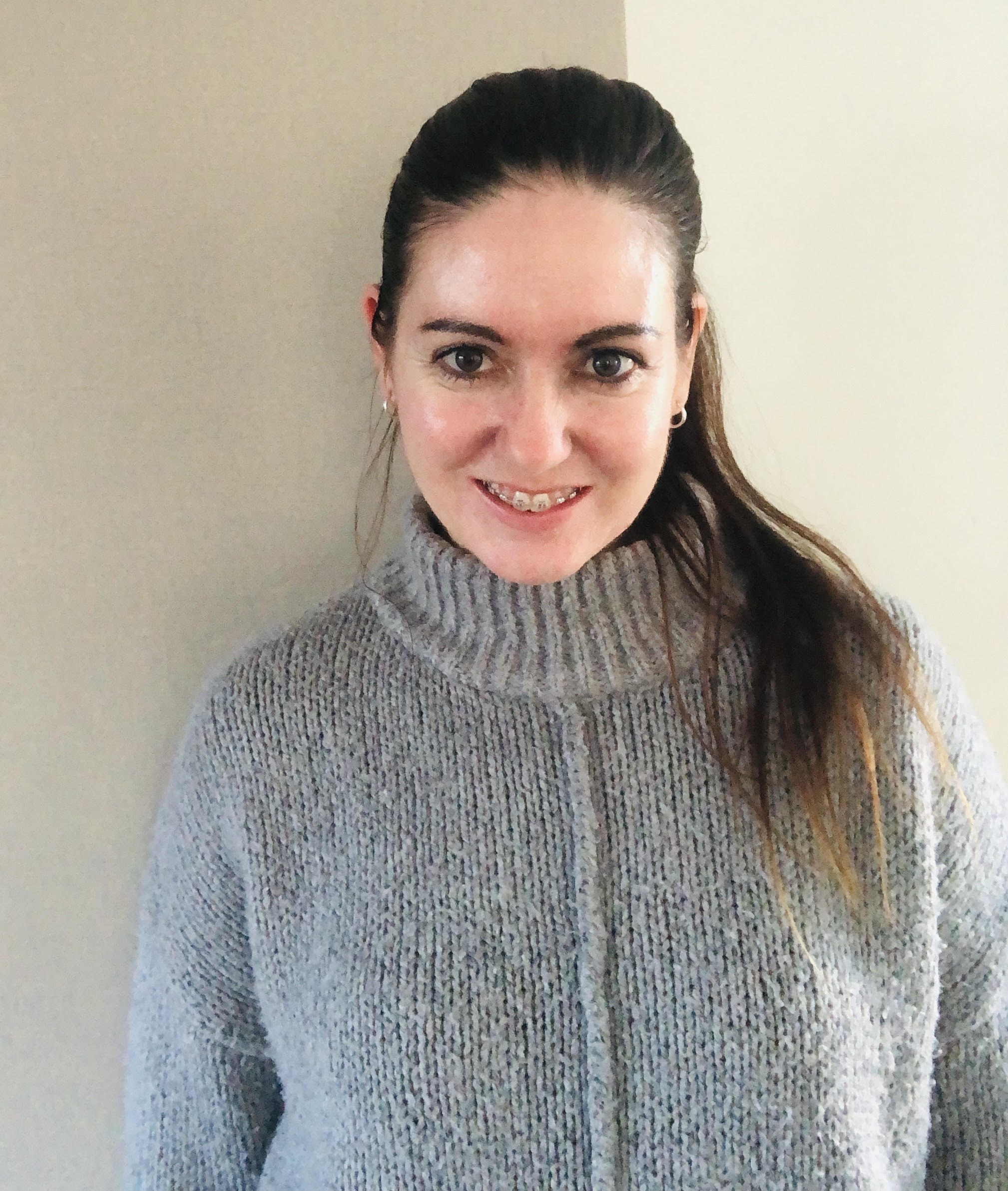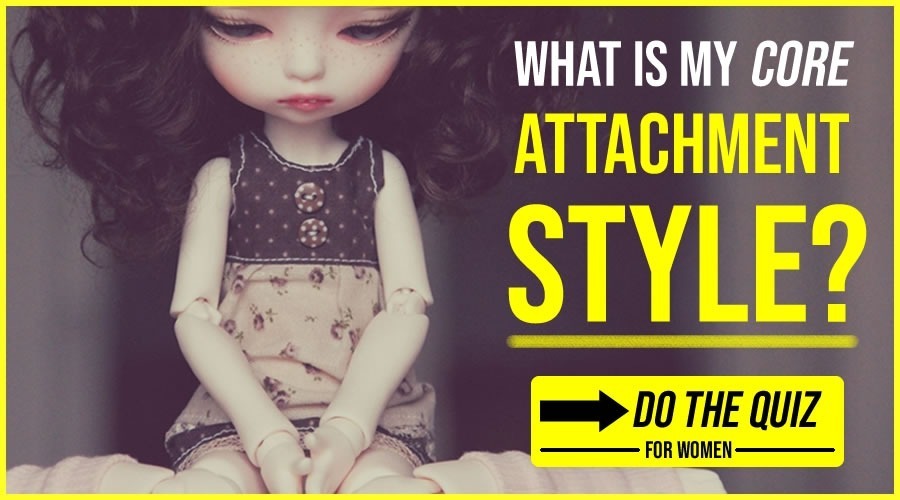NCRW
The 4 Types Of Attachment Styles & Which One Are You?
Author: Sarah Meyer
Do you tend to obsess in your relationships, over-analyzing text messages and response times, feeling like you need to constantly ward off threats to your relationship? Or are you more likely to avoid getting too close, preferring to take care of your own needs?
Maybe you’re actually pretty comfortable with the give and take of a relationship, able to flow between more connected states and more independent states without experiencing huge amounts of stress.
Or perhaps you find relationships deeply frightening and even disorienting, and struggle to approach them in a coherent way.
I’ve acted out all of these patterns at some point, and I’m sure many others have too. But research in the field of attachment shows us that we all have a primary pattern that we ‘go’ to.
The psychology of attachment styles looks at the way we form close, long-term bonds with first our caregivers and then other human beings later in life.
This area of research or the types of attachment styles tell us that people have a dominant attachment style that describes their habits in relationships over a long period of time.
Attachment styles are formed in our childhood, as we develop expectations about how much - and what kind - of love and support we can expect from people close to us.
If you had a caregiver that was reliable, warm, present, and responsive to your needs most (say 70%) of the time, you may be more likely to generalize that type of relational habit to other people.
Once you get to know someone, it might feel natural for you to approach them with openness and trust. This would be considered a secure attachment.
If, however, your parents were rejecting, dismissive, abusive, or simply inconsistent in the way they interacted with you, you might experience some doubts around your worth as a human being.
You might also question whether other people truly care for you, and whether they can be relied upon to be there for you. These kinds of beliefs are characteristic of insecure attachment.
seems unfair, if we’ve experienced pain and disappointment in childhood, it tends to follow us around later on and create even more pain in our relationships.
This is because our past can make it hard to calibrate our responses to the indicators of closeness and loyalty that our partner offers us- so we are more likely to fall out of sync with him or with the way the relationship is developing.
And that difficulty with attunement can mean that we may naturally take more than we give.
The good news is, attachment patterns can change. We don’t have to settle for the pain and disorientation that so many of us carry with us from childhood- often without much understanding of where it comes from.
This process starts with awareness- of ourselves and the patterns and biases that feel like home to us and the people that raised us.
Types Of Attachment StyleS: Which One Describes You?
Anxious Attachment Style Vs The Feminine Bias For Attaching Early
Disorganized Attachment Style
What To Do Now? Types Of Attachment Styles: Which One Describes You?
When we look at the patterns that make up attachment behavior, we typically look at two dimensions.
The first dimension is attachment anxiety. This describes a person’s tendency to feel anxious in close relationships. Specifically, to worry about whether other people really like them and want to spend time with them, and to fear that they will be abandoned by those they love.
The second dimension is attachment avoidance. This describes a person’s tendency to avoid closeness in relationships, to minimize interdependence with other people, and to remain emotionally detached so that they cannot be hurt.
Let’s look at the types of attachment styles in relationships and have a good look at which types you most see yourself in.
The Anxious-Preoccupied Style
A person who experiences a lot of attachment anxiety is said to have an anxious-preoccupied attachment style.
This attachment style is common in people who grew up with the belief that love is inconsistently available and has to be earned- often by pleasing their parents or trying to be perfect.
In romantic relationships, anxious-preoccupied attachment can look like the woman who gets attached a lot faster than her partner does, perhaps oversharing about herself in order to make sure he approves of her.
She might tend to hyper-analyze text messages, overthink her own actions and words, and mirror a man’s interests and opinions in an effort to get closer to him.
In general, people who are anxiously attached also might come across as clingy or jealous, finding it difficult to handle separations from their partner, especially as time goes by and they become more invested in them.
Or, they may simply suffer in silence, afraid to bring up their worries for fear of looking needy- but then they pay the price by becoming quietly preoccupied with minor threats to the relationship.
MORE: Preoccupied Attachment Style: Beware The 8 Signs You Have It.
This Is one of the types of attachment styles that, if you have it, can mean you are more vulnerable to abusive partners, because you may tend to over-value the people you are with and under-value yourself.
This is actually very common among women who already have a tendency to attach early in general.
So how does undervaluing oneself manifest?
This can lead her to overlook red flags (or explain them away as her own mistakes).
She also tends to feel like she’s giving a lot to the relationship, potentially burning herself out, but because she isn’t attuned to her man, he doesn’t receive her love for him in the way she intended.
A woman with an anxious-preoccupied attachment style can be prone to pushing others away - whether by making unfounded accusations that come more from an attempt to regulate her anxiety than from any actual problem in the relationship, or by seeking so many signals of closeness from her man that he leaves her to restore his own sense of freedom.
It’s important to note that these signals of closeness- such as spending all your time together, texting all day long, inter-dependence, frequent declarations of love- don’t actually constitute closeness.
Of course, they can, but true connection is much more than those things, and often thrives without them.
Sometimes, seeking the outward signals without actually building the connection that should underpin them, can really take from the other person without adding much value.
This is another place where those of us that struggle with anxious-preoccupied attachment (definitely me!) can really get stuck and disconnected from our partner.
Here’s an article I wrote on How To Self Soothe Anxious Attachment In 5 Simple Steps.
Anxious Attachment Style Vs The Feminine Bias For Attaching Early
It’s also important to note that for most women, it’s actually quite normal to emotionally attach earlier than a man does, because it serves her to do so. As a woman, she needs to form that bond in order for her children and herself to feel safe and to have a high likelihood of having emotional support in the future.
This was, and has been, necessary throughout the millennia in which humans have existed on this earth.
The real challenge comes, however, when a woman is not only attaching early due to her innate feminine bias for attaching early, but is also adding into the mix her anxious attachment style.
Attaching early isn’t bad in and of itself - it’s how you manage it that either makes a man fall in love with you and come closer to you emotionally, or want to run the other way.
If you would like to learn how to use your feminine bias for early attachment to create deeper emotional attraction and emotional connection, CLICK here to check out our program ‘High Value Attachment’.
(The promise of this course is to help you to use your innate feminine bias for early attachment to create deeper attraction with men and inspire a deeper commitment from him without you looking needy and low value).
Avoidant Attachment Style
A person with an avoidant attachment style deals with a lot of the same anxiety in relationships as an anxious/preoccupied person, but their response may look and feel a little different.
Sometimes, the anxiety is present at a more subconscious level, so the person might not be aware they are experiencing it.
Instead, they can rigidly subscribe to patterns of behavior that prevent the anxiety from surfacing at all. These patterns can include:
- Avoiding emotional conversations
- Minimizing investment in one person
- Seeking a lot of superficial validation; or
- Stonewalling in times of conflict.
The avoidant attachment style is common in people who grew up with unavailable or dismissive caregivers, where love and warmth were not reliably available, and the child had to take care of her own needs from a young age.
Recommended: Dismissive Avoidant Attachment: What Is It & 7 Obvious Signs.
In adulthood, women and men with an avoidant attachment style might be highly successful and competent, but struggle to connect emotionally.
They might settle for a man or woman that they are not attracted to, having the semblance of a relationship without having to connect deeply.
Or, they might be attracted to someone who doesn’t want a real emotional connection- someone who is emotionally unavailable.
So far we have looked at two out of the three insecure attachment styles. The last type of insecure attachment is often overlooked in the types of attachment styles, and it is the disorganized attachment style.
Disorganized Attachment Style
A person with a disorganized attachment style experiences both high anxiety and high avoidance in relationships.
They may struggle to adopt a coherent strategy for the way they relate to others, and so they flip flop between seeking a lot of reassurance and withdrawing from connection.
This usually happens subconsciously- they might suddenly find that they don't feel the safety that they need in order to show up in the relationship, and pull away to avoid their feelings of distress and worry.
This can be very confusing and disruptive for their partner, and may cause them to feel unsafe in the relationship themselves, or worry that they don't know how to take care of them and make their partner happy.
Related: Disorganized Attachment Style: Beware The 8 Signs You Have It & What To Do.
People with a disorganized attachment style usually grew up with significant abuse and neglect- or sometimes with a parent who was very frightened and insecure themselves.
Usually, as a child they experienced feeling afraid and distrustful of their parent(s), but without anywhere else to turn, were still forced to approach an unpredictable or angry adult in order to get their needs met.
Years later, they may project this persona onto their partner, defensively expecting rejection and hurt. This attachment style probably presents the most challenges for people wishing to form a healthy and stable relationship, but with time and support, it is possible to recalibrate.
Secure Attachment Style
The secure attachment style - characterized by low levels of anxiety and avoidance and greater ease in maintaining relationships- is the most common of all the types of attachment styles.
This attachment style tends to prevail in people who have had relatively close and stable relationships with their caregivers growing up.
While no-one is perfect, a good number of parents do manage to foster independence in their children while responding warmly to their children’s needs.These parents are described by psychologist Donald Winnocot as:
“Good enough parents”.
In adulthood, securely attached children are generally open to forming close connections with others.
As long as the other person also welcomes the connection, the relationships they form can look quite warm and stable.
All couples will of course experience some conflict, but securely attached partners will usually be a little more comfortable with disagreement, and feel confident in owning their own thoughts, needs, and feelings.
This means that rather than building up defensiveness and resentment in the relationship, problems can be worked through without the extra baggage of insecurity, mistrust, and dread.
Similarly, securely attached people will also find it easier to sustain trust in their partner over time. Their trust will not decay quickly as time passes following the last loving or affectionate exchange, and relationships will require generally less emotional resources to remain strong.
This is not to say, though, that securely attached people will never struggle in relationships, because there are a lot of other things that affect the way we show up and interact with a partner.
Secure attachment just offers some resilience as we deal with these challenges.
(Why is this important? It is because your core attachment style largely dictates and influences what happens in your relationship. Thus it’s imperative you understand your core attachment style!)
What To Do Now?
When we look at ourselves and work out which attachment style best describes us, it’s easy to feel disheartened.
(If you'd like to work out your attachment style for sure, here's a quiz we have created specifically for women to work out their attachment style).
Our habits and beliefs can be so hard to break through, and they can make our relationships exhausting.
But by learning about the natural biases that we have developed in our lives, we can start to think more critically about the meaning we give to the things that happen between us and our partner.
This can help us let go of the fears that stop us from reaching out to understand our man (or woman), and learn to notice where he’s at instead.
We can also get a sense for the kinds of experiences that we need to invest in to help us grow- which usually are the scary ones!
If you would like help with your personal situation or to get coaching with Sarah, CLICK HERE.


Sarah Meyer
Sarah is a Shen Wade Media Certified Coach.
She has a Masters in psychology and works as a special education advisor in early childhood. She lives in Auckland, New Zealand, with her partner and two children.
She has a passion for evolutionary psychology, attachment theory, and personality psychology.
Renée Shen
Author & Editor For National Council for Research on Women. Founder of the popular women's dating & relationship advice website, The Feminine Woman and co-founder of NCRW.
P.S. I hope you've enjoyed this article. Here are some other articles that I think you'd really like too...
How To Overcome Anxious Preoccupied Attachment: 7 Proven Steps
13 Proven Signs of Attachment Issues in Adults + How to Fix It for Good
© Copyright National Council for Research on Women. All Rights Reserved
